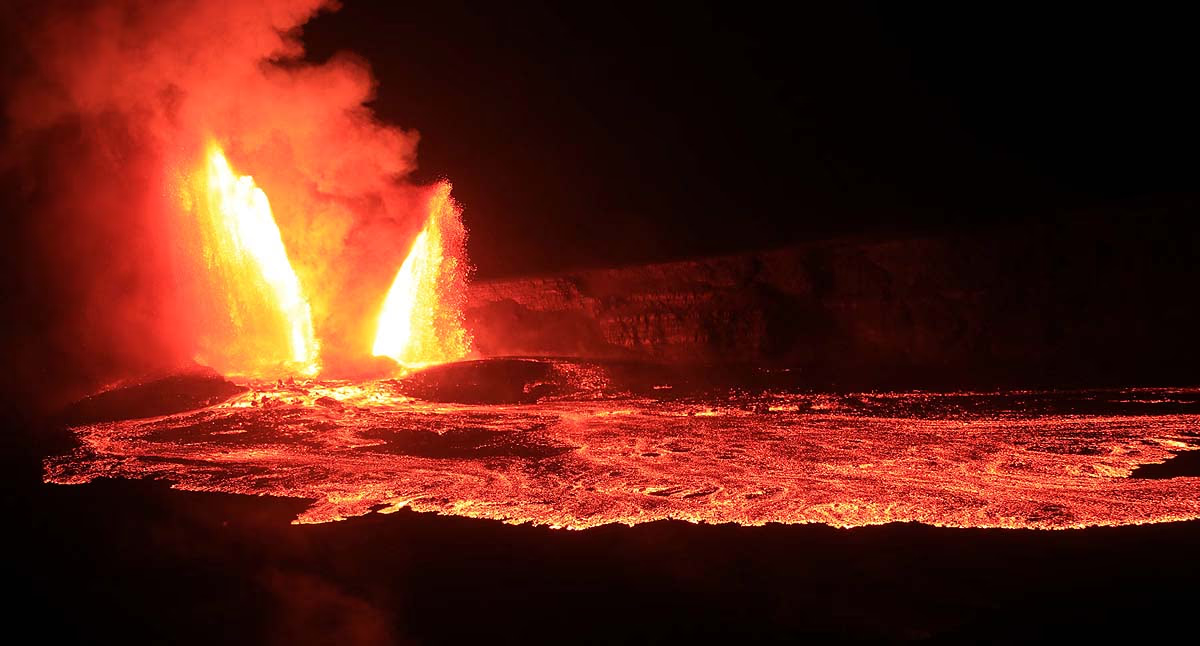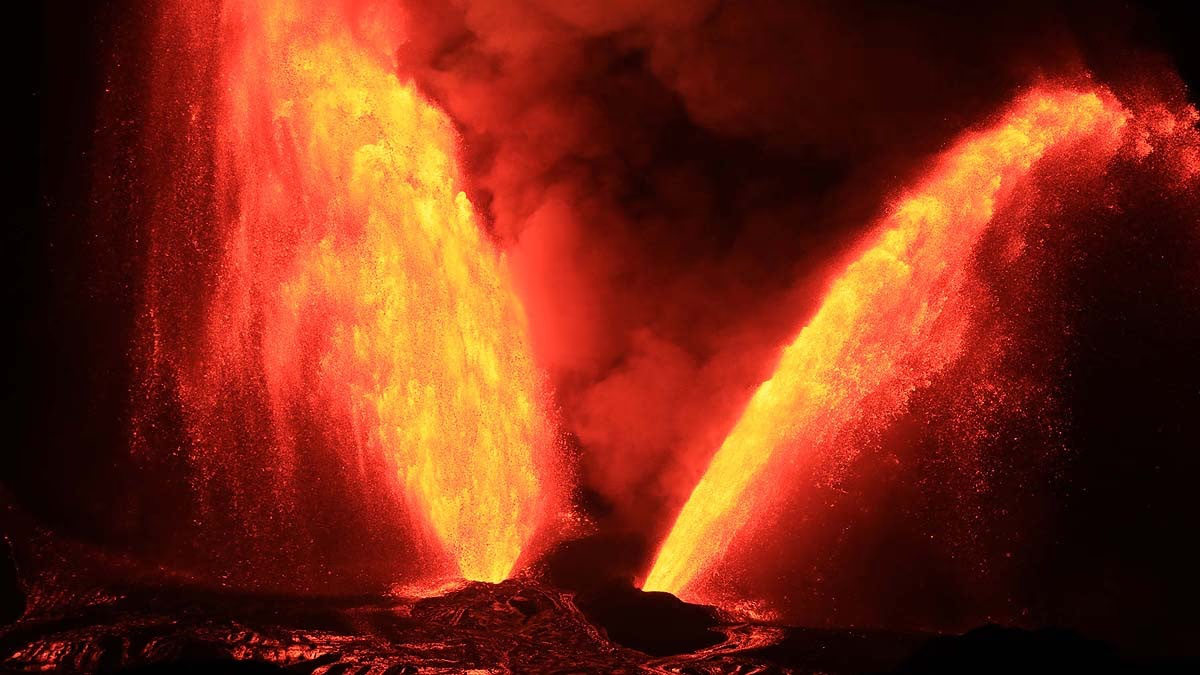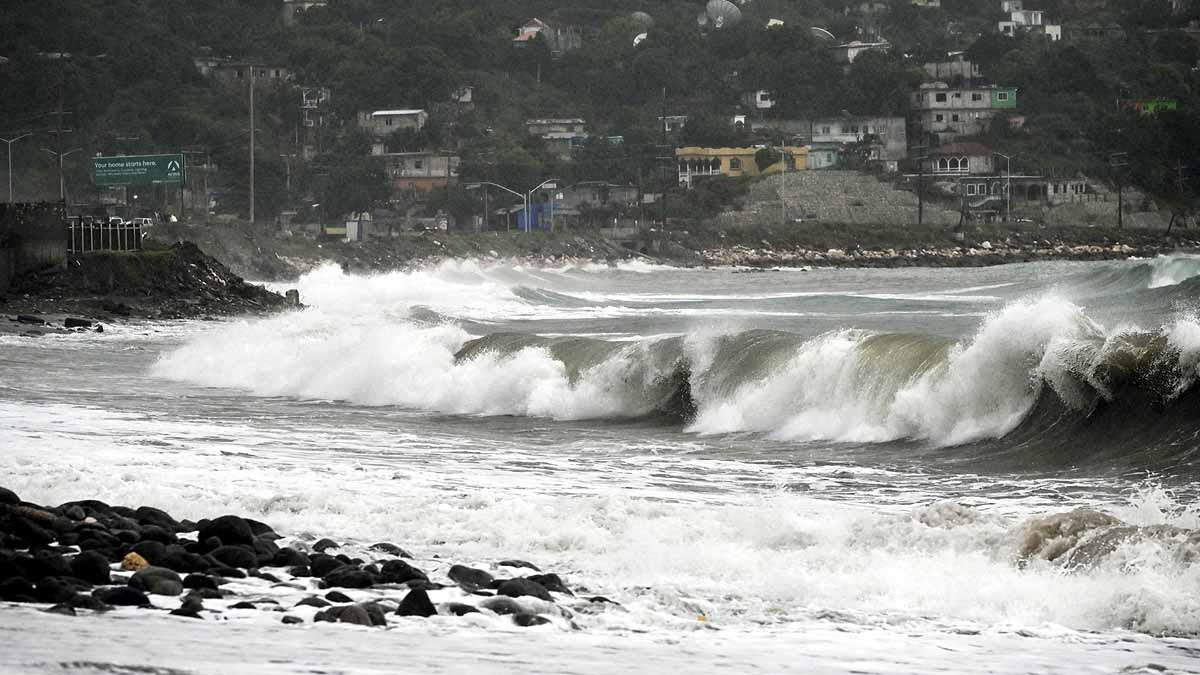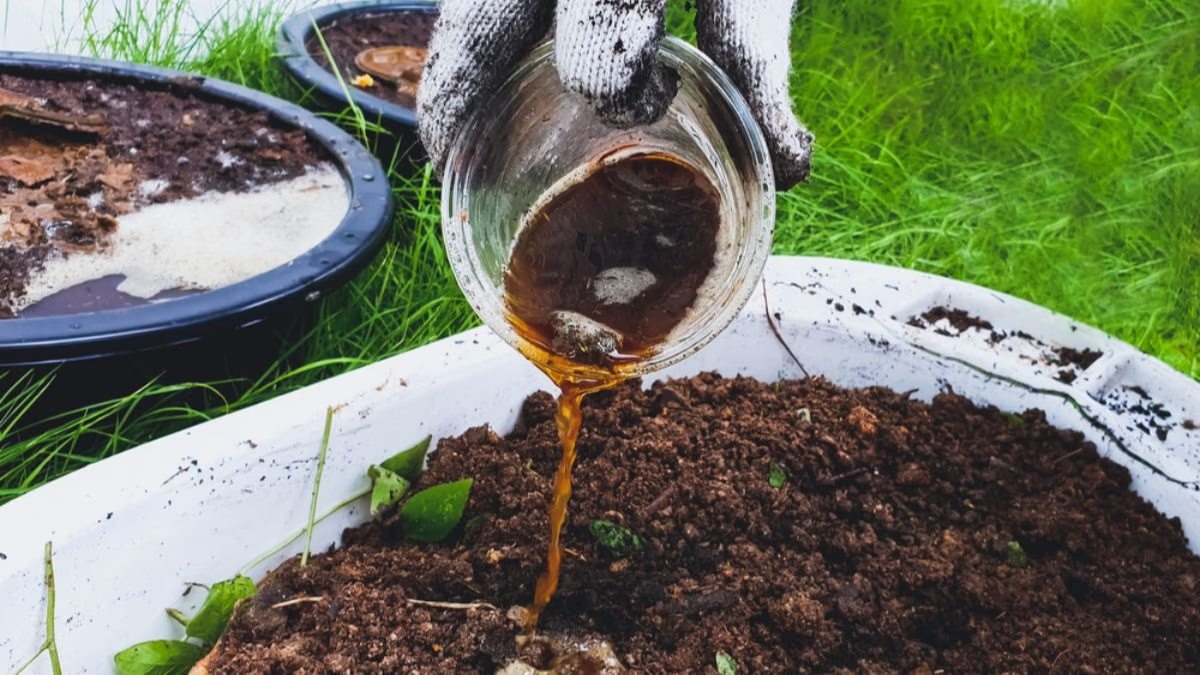Located on the Hawaiian Islands, the Kilauea volcano is renowned as one of the world's most active volcanoes. Since the end of last year, it has been relentlessly spewing mesmerizing lava, enchanting locals, tourists, and online audiences alike. The fiery spectacle erupts like a blaze of flames, capturing imaginations as it unfurls. This time it truly pushed the limits – the twin streams of lava appeared as if two horns were emerging from a devil's head.
On Wednesday, Kilauea recorded its 34th eruption since December. Scientists reveal these eruptions are part of a larger volcanic event, with magma, the hot molten rock within, making its way to the surface via a singular path. This occasion saw lava fountains surging 1,300 feet (approximately 400 meters) out of the southern vent.
This eruption reached heights greater than the Empire State Building in New York, an iconic 100-story skyscraper. The eruption lasted around six hours and then subsided. The good news: all the lava remained safely within the crater of Hawaii Volcanoes National Park, posing no threat to buildings or residential zones.
Visitors can witness the spectacle directly in the park, and those who cannot visit can watch live streams provided by the United States Geological Survey (USGS), offering views from three distinct cameras. Situated on Hawaii Island, the largest island in the Hawaiian archipelago, Kilauea lies roughly 320 kilometers south of Honolulu, the state's largest city.
The scenery at Kilauea may seem magical, but there is a scientific explanation behind it. Below the Halemaʻumaʻu Crater lies a magma chamber, pulling in approximately 5 cubic yards (3.8 cubic meters) of magma from within the Earth every second. This chamber swells like a balloon, pushing magma into the upper chamber hole, where it eventually finds its way to the surface through fissures.
Since December, multiple eruptions have propelled towering lava into the air. Sometimes these lava towers reach 1,000 feet (300 meters) high due to the presence of gases within the magma. As it ascends through narrow, pipe-like vents, the entrapped gases burst, causing these explosive releases. The heavier, older magma, with its gases already expelled, is pushed by the fresh, new magma beneath—akin to shaking a champagne bottle before opening.
According to Ken Hon, the scientist-in-charge at the Hawaiian Volcano Observatory, predicting eruptions involves complex methods. He likens scientists to ants trying to uncover an elephant's secrets. With sensors, they can predict eruptions days in advance as magma swells and contracts. Smaller fountains occur when the vent widens, reducing pressure.

Source: aajtak
Over the past 200 years, Kilauea has produced such streams of lava fountains four times. It first happened in 1959 and then in 1969. The third occurrence started in 1983, consisting of 44 episodes over three years, witnessed by fewer people due to its remoteness. The eruption from 1983 continued for 35 years, concluding in 2018.
Currently, scientists are uncertain about the future course of these eruptions. It might lead to increased magma pressure forming a new vent and continuous lava flow, mirroring the 1983 events, or it may halt if the magma supply dwindles. Professor Steve Lundblad of the University of Hawaii comments that wider vents result in smaller fountains.




